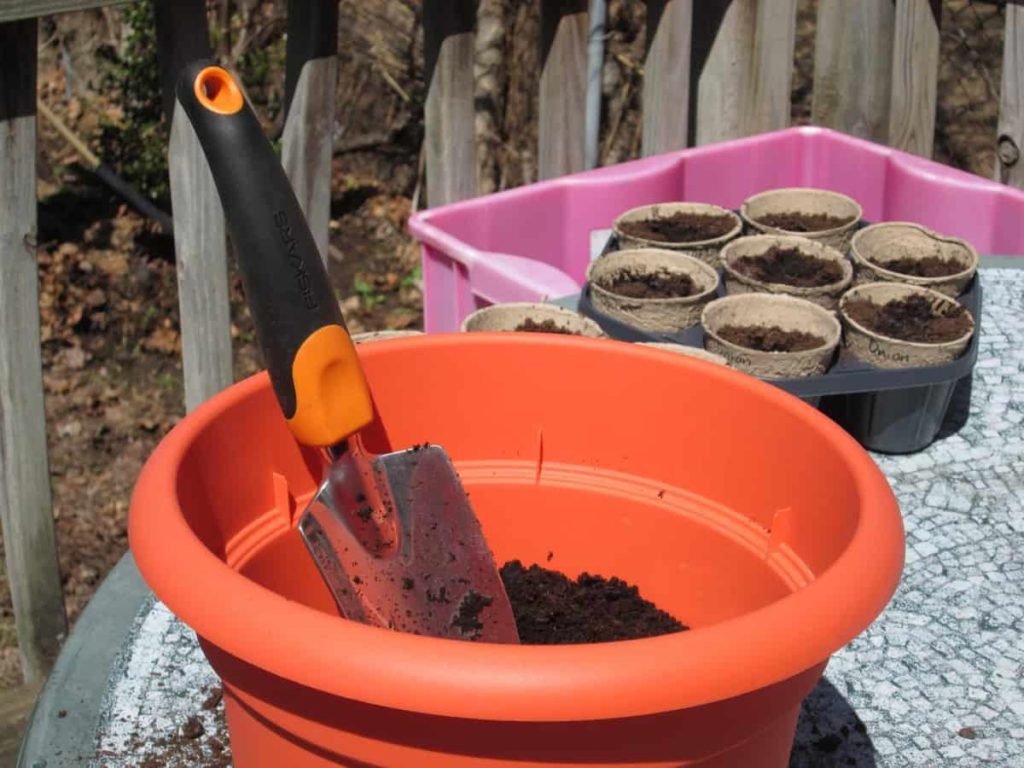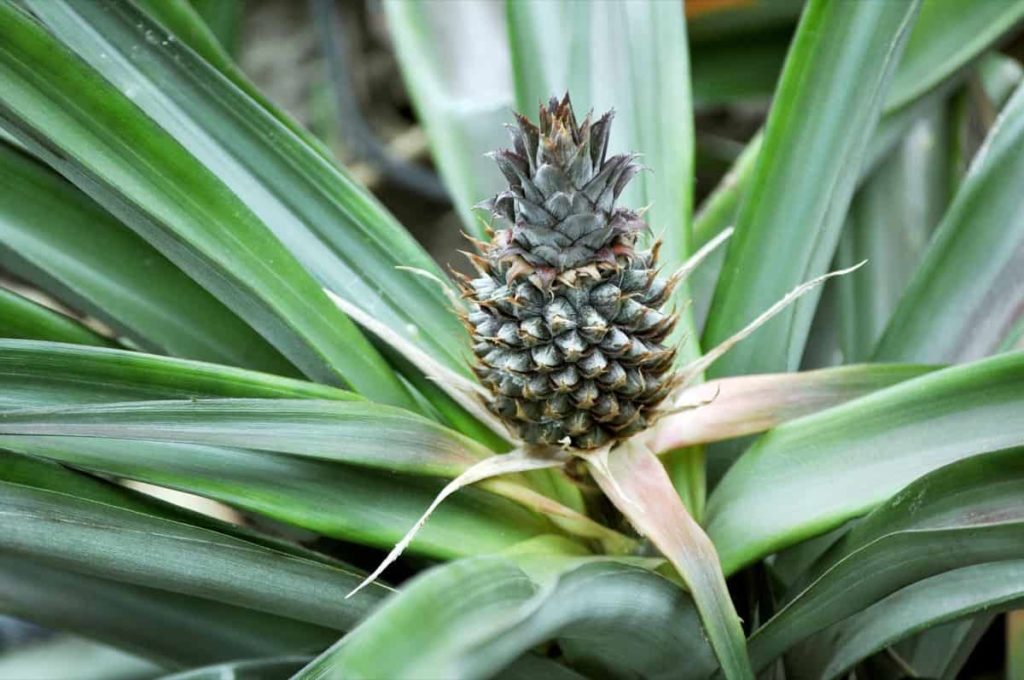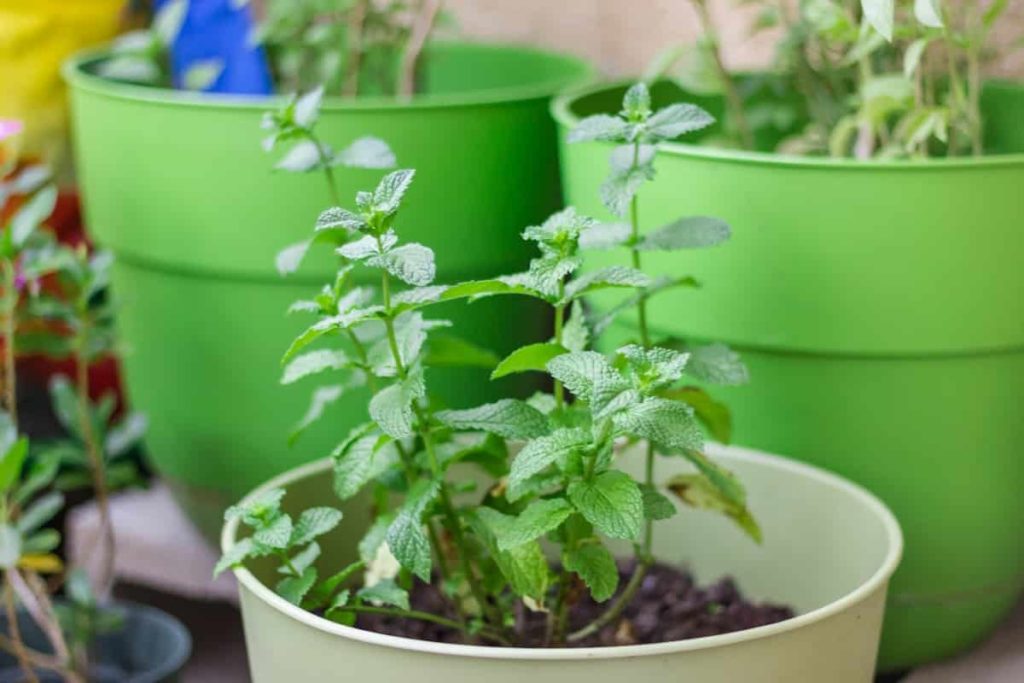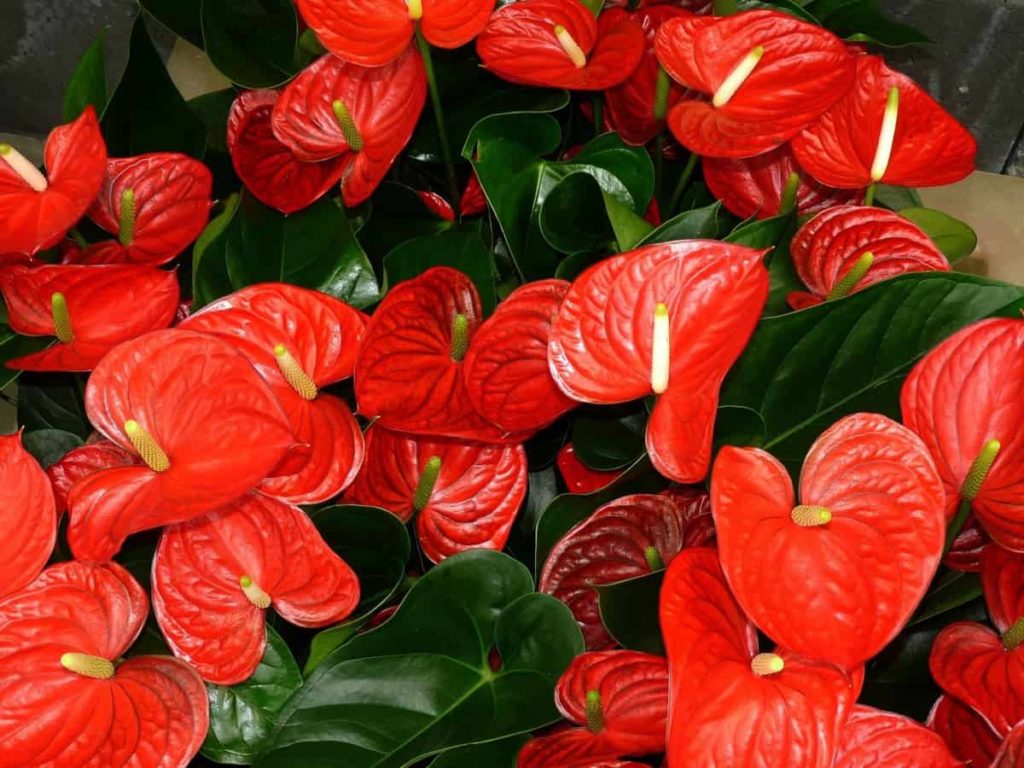Using containers, it’s simple to add a burst of colour to your yard, patio, or porch. A pot of begonias or petunias is all you need to get started. Planting magnificent container gardens full of vibrant flowers, fruits and greenery, on the other hand, requires a bit more work. However, the appropriate combination of plants in a beautiful planter can create a work of art.
You’ll always have a gorgeous container garden if you follow these easy steps. Fresh herbs and vegetables can be easily grown in containers. This is an excellent choice for those pressed for time or space yet want to enjoy the garden’s fresh tastes. Let’s check out more information about Hawaii container gardening. This article provides information on producing fruits, vegetables, flowers, and herbs in containers in Hawaii.
Topics covered include the best-potted plants for Hawaii and the best home garden plants containing several localities in Hawaii, including Honolulu, Pearl City, Hilo, East Honolulu, and Waipahu, which have come together to become key focus places for container gardening across the state. People who are eager to learn about container gardening and the benefits of gardening in containers will find this article particularly interesting.
USDA hardiness zones of Hawaii
Because there are only two seasons in Hawaii—summer and winter—planting Hawaii’s zones is among the most challenging. Because of this, Hawaii is a one-of-a-kind place. In regions located at sea level, the average summer temperature is 85 degrees, while the average temperature during the winter months is just 78 degrees. The fantastic weather of this state is a significant contributor to its reputation as the “paradise state.”
Although lower temperatures might be expected on an island’s higher-elevation mountain sections, most of the islands enjoy a constant tropical environment that can be seen and felt throughout their whole. For example, in Hawaii, December has the most average rainfall, while June is the month with the lowest average rainfall. As a result, there is a larger variety of growth zones on the islands than one would anticipate finding there.
There is a wide range of possible planting zones in Hawaii, from 9a to 13a. However, all of them are hotter than the lower planting zones; you will need plants and vegetables that can deliberately thrive in far warmer climates. If you don’t know what growth zone a garden will be in Hawaii, there is a bigger chance that plants won’t make it. Therefore, it is crucial to understand what those zones are.
If you are familiar with the zone, you will be able to choose plants that have a greater chance of flourishing in a specific location. Keep in mind that most plants that grow in zones lower than yours or in the same zone as you can survive. Because all of Hawaii’s zones are on the top end of the spectrum, picking plants that need a higher hardiness zone is not often an issue in Hawaii. The tropical environment of Hawaii results produces the most stunning flowers in the world.
The standard consists of enormous exotic flowers and provides a delightful aroma. The islands are home to many flora species, including hibiscus, plumeria, and orchids. A vegetable garden is perfect for cultivating fruits and vegetables such as melons, eggplant, strawberries, kula onions, celery, and kabocha squash. The colder regions of the state are ideal for growing some vegetables, such as carrots, while others, such as maise and cabbage, can be cultivated and harvested.
Hawaii container gardening: Steps to grow plants in containers in Hawaii
Pick your ideal container
There is an almost infinite variety of alternatives available for planting pots. Your creativity is the only thing that matters here. It is essential not to neglect containers that have the potential to become hanging baskets. Objects that have been “founded” around the home should not be ignored. Plants can be housed in various containers, from teacups to whiskey barrels and anything else you can think of. Check that the container has enough drainage and that the soil combination is suitable for the plant you want to grow there.
In case you missed it: Wisconsin Container Gardening: How to Start with Vegetables, Fruits, Flowers, and Herbs at Home for Beginners

Be mindful that the volume of potting mix a container can hold decreases proportionately with its size. Maintaining the right amount of soil moisture becomes even more critical since there will be less tolerance for mistakes due to this change. People often worry about maintaining enough moisture levels in their containers, but it’s possible that overwatering them might be an even bigger issue. It is also possible for plants to drown. So, you should make sure the containers support enough drainage.
Clay containers are less likely to cause waterlogged plants than plastic pots. This is because clay “breathes,” but plastic cannot lose moisture via evaporation. No matter what pot material you choose, check to see that it has enough drainage holes (or drill some of your own) to prevent water from collecting in the bottom of the container.
You have to select an ideal soil for growing your container plants.
One of the most typical mistakes in container gardening begins with the soil. People think they can grow plants by transferring garden soil into containers. Rather than using garden soil, use potting mix meant for containers. Once you have decided what sorts of plants you want to cultivate, the next step is to study to determine the optimal soil composition for each plant and then apply that.
There is a large selection of soils and potting mixes available for purchase at your neighbourhood’s garden centres and home improvement shops. The cost of the soil needed to fill a big container might add up quickly. When you plant a tree or a huge shrub in a large urn, the roots will need substantial soil to grow and spread out. On the other hand, if you are planning to plant blooming annuals with shallow roots, you can save costs by placing “filler” at the bottom of the pot.
Use non-biodegradable and inert items, such as crushed aluminium cans or plastic bottles. These things will still help drainage. On top of the filler, lay a layer of landscape fabric, and then cover it with potting soil. If you want to move the container around, doing this will save you money and cut down on the amount of weight it has to carry.
Choose your container plants
Decide whether you want to sow seeds or starters first. Creating your plants from seed can be an enjoyable experience. However, you can prefer starting plants over seedlings or seeds depending on your schedule. Because starter plants are almost mature when planted, the cultivation process is simplified and requires much less. In addition, if you do not have a lot of time on your hands to wait for some plants, such as herbs or vegetables, to mature, it is possible that it would be more beneficial to utilise starters rather than seeds.
How to plant it in your container?
According to the design you had originally drawn out on the soil’s surface, arrange the plants while they are in their pots. Check to see that the arrangement has the appropriate amount of space between the plants and that you like how it looks overall. Adjustments should be made as required. To begin, take care to take out the plant from the pot. In this case, a gentle release of the root ball is recommended if it is tightly packed. Then, replant it in the same location, but this time with the same hole depth.
It is necessary to repeat this process with the other plants in the design. When necessary, fill up the space surrounding the plant, but do not mound the potting material higher than the depth of the plant or up to the level of the plant’s base. After all of the plants have been situated in the container, give it a gradual but thorough watering until water is able to escape via the drainage holes at the bottom of the container.
If both the planter and the plants are on the smaller side, you may want to water them from the bottom up. First, put the container into a bigger bin with 2 to 3 inches of water in it, and then let the water draw up from the bottom of the larger bin until the top of the soil is just slightly moist.
Provide support for the plants if necessary
Plants with long, thin stems should be staked and tied like tomatoes and green beans. Either your railing or a trellis constructed in the shape of a tripod might serve as a support for them. A trellis can be constructed with three bamboo poles, three wooden dowels, or three sticks. Put one end into the ground, and then use wire or twine to secure the other ends together. Ensure that it is strong and stable! After that, carefully secure the plants to the trellis using the string.
Make sure you water your plants every day.
When planting a seed or starting a plant, water the soil to minimise shock. Before you plant it, do some research about the plant to ensure that you will be able to give it the appropriate quantity of water each day. Plants planted in containers lose moisture more quickly than those planted in the ground. Watering your container plants first thing in the morning gives them the most opportunity to absorb the water before it becomes too hot. The plants should be watered after the soil has dried up, but you should still keep an eye out for weak, dry leaves and stems.
How to fertilise the container plants?
Fast-moving water flushes nutrients from containers. Salts in the soil might be flushed out as a result of this. However, this implies that container plants must be fed more often than those planted in the ground to recover the nutrients that have been depleted. Therefore, adding a slow-release fertiliser to your potting soil at the beginning of the growing season is generally recommended.
In case you missed it: Georgia Container Gardening: How to Start with Vegetables, Fruits, Herbs, and Flowers at Home for Beginners

Planting may either be done by mixing in the fertiliser at the time of planting or by “top-dressing” the potting mix after planting. Your plants’ growth will benefit from this. At least twice a month, apply a liquid fertiliser to container plants that are actively developing, flowering, and fruiting, following the label’s directions. If possible, do a soil test to determine whether or not extra fertiliser is required. Trace elements can be added to container soil by using fish emulsion or compost.
What vegetables to grow in containers in Hawaii?
Establishing a garden in Hawaii can be difficult, and choosing the finest foods and plants to grow there, such as taro, beans, eggplants, okra, tropical peppers, and herbs. However, it is possible to accomplish both of these things. The information necessary to grow some of these plants has been provided here.
Sweet potato: Even in the driest sections of Hawaii, the sweet potato is a well-known Polynesian crop that thrives. White potatoes are susceptible to fungal infections and insect pests, but red potatoes are more resistant. All that is needed is well-drained and loose soil free of huge stones. Some types can even be used as beautiful ground coverings in places with little foot traffic. Waimanalo Red, Kaneohe Red, and Lonoke are all excellent choices for Hawaii.
Kalo: The ancient Polynesians relied heavily on Kalo, or taro, as their primary food source, and it is still farmed in Hawaii today. Kalo thrives in full sun, wet, well-drained soil, with a thick layer of mulch. Additionally, Kalo’s brilliant green to red foliage is a beautiful addition to any garden.
Eggplants: When it comes to growing vegetables in Hawaiian containers, eggplant is one of the best bets. Long Japanese varieties, which develop swiftly and are resistant to insect infestations, are the finest producers. Eggplants need well-drained, rich soil.
In case you missed it: Canada Container Gardening: How to Start with Vegetables, Fruits, Flowers, and Herbs

Tomatoes: Fungi, root-knot nematodes, and fruit flies are significant threats to Hawaii’s tomatoes. To thrive, they need nutrient-rich soil that drains properly and is always wet. Because they develop fast and have thicker skins, cherry and Roma tomatoes tend to be more resistant to fruit fly infestation.
Cucumbers: Cucumbers can be harvested in Hawaii’s low-elevation regions. They can only be harvested from April to October in the mountains since the winters are too severe for them to thrive in containers.
What are the fruits that can be grown in containers in Hawaii?
Many fruits like lychee, citrus fruits, mango, pineapple, blueberries, guavas, avocadoes and others can be grown in containers in Hawaii. We provided details of some of the fruits below that grow in containers in Hawaii.
Avocadoes: There are more than 190 types of avocados produced on the island of Hawaii. These trees can bear fruit up to twice a year between November and May. You’ll be able to enjoy them for a more extended period this way. Most of these varieties can be grown in containers easily.
Guava: Fruits of the guava tree are oval and are called guavas. Also, these fruits come in a variety of colours, including pink, pale green, and yellow. During the ripening process, guavas get softer, and you may eat the fruit, including the seeds and peel, whole.
Citrus: Citrus trees can be grown everywhere, from the coast to the mountains, and each type has its preferred growing conditions. Our tropical environment means that oranges and tangerines will have darker skins and a stronger hold on the peel, making them more difficult than citrus is grown in regions with a more moderate temperature. An ideal growing environment for citrus trees is free of standing water and receives regular fertiliser with micronutrients.
Pineapples: Pineapples are an essential part of any list of Hawaiian products. They’re easy to grow in pots, and in Hawaii, they’re available all year round.
In case you missed it: Singapore Container Gardening: How to Start with Vegetables, Fruits, Herbs, and Flowers

Legacy blueberries: If you’re looking to grow blueberries in Hawaii, Legacy Blueberries are the finest option for newbies! This shrub stands out from the others because of how quickly it grows. In your first year, you should be able to pick your berries. The Legacy Blueberry Bush is a great plant to grow in Hawaii since it can be planted in pots or in the yard. This shrub will thrive in full sun and well-drained soil.
What herbs to grow in containers in Hawaii?
Hawaii is a great place to grow various herbs, including rosemary, basil, oregano, thyme, sage, ginger, turmeric, lemongrass, coriander, cardamom, etc. Below we have provided details of a few herbs from the list.
Basil: Basil is a versatile herb that may be utilised in various ways, from pesto to oil infusions to pizza toppings to soups. Ideally, basil plants should be grown in full light with moist soil, and harvesting the leaves is as simple as pinching them off with your finger where they join the stem. Basil can be kept in a sealed jar and frozen, although it is best when used fresh.
Chives: In addition to adding to your herb collection, they can be placed on your kitchen windowsill, making them both functional and visually appealing. A chive plant may flourish in full sun or moderate light in wet soil—harvest chives by chipping them with sharp scissors and chopping them on a cutting board.
Cilantro: It likes to be watered when the soil seems dry to the touch and grows best in full light. It is ideal for cutting the stems at their joints for cuttings to encourage new growth when harvesting cilantro.
Mint: Mint thrives in partial light and wet soil, whether in a garden or a container. Gently remove the herb’s mature leaves, allowing it to continue to develop. It is ideal to use mint fresh from the container.
In case you missed it: Easy Plants to Grow at Home in USA: For Containers, Backyard, Patio, and Indoors

Sage: Sage grows in size and abundance as the summers heat up. This low-maintenance herb is all you need. It’s simple to grow them in containers.
What are the flowers that can be grown in containers in Hawaii?
Many flowers such as bird of paradise, anthurium, Hawaiian gardenia, pikake, blue ginger, Hawaiian hibiscus, plumeria, Hawaiian lily etc. can be grown in containers in Hawaii. We have provided details of a few flowers to grow in containers in Hawaii.
Plumerias: Plumerias bloom in Hawaii from April to November. They come in various colours, including pink, purple, and salmon pink, and have a strong scent. Depending on the location and environment, the pods can produce flowers for 365 days.
Hibiscus: Because it is so resistant and almost durable, you can choose from a wide range of deliciously tropical colours, from vivid to more subtle colours, depending on the effect you want to achieve in your garden. Hibiscus plants are sun-loving, simple to grow, and don’t need much attention from the soil, making them ideal for growing in containers in Hawaii’s diverse climate.
Anthurium: This plant can reach one to two feet and bloom year long. It adds colour and vibrancy to the environment with its waxy heart-shaped blossoms and pink and spectacular scarlet foliage. If the Anthurium gets too much direct sunlight, it will die. It requires a constant water supply and a fertiliser rich in phosphorus to thrive.
In case you missed it: Oklahoma Container Gardening: Beginner’s Guide for Vegetables, Fruits, Herbs, and Flowers

Bird of paradise: This is a popular Hawaiian flower. Leaf colour ranges from blue-green to purple, with red midribs and orange-coloured petals. These plants are perfect for growing inside since they can reach 4-5 feet and widths 2-3 feet. Bird of Paradise needs good loamy, well-drained soil and full or partial sunlight for optimal development.
Pikake: Hawaii’s state flower, pikake, is also known as Hawaiian peacock jasmine. As a trailing vine or shrub, this plant may be cultivated. Although it blooms extensively in summer in frost-free zones, it blooms all year long. Cream and white chalk colours are offered for the flowers. Pikake jasmine should be grown with full exposure to the sun. Every day, water the plant and its leaves.
- Gardening Techniques in Planting Vegetables
- Where to Place Indoor Plants in Your Home
- How to Grow Tomatoes Organically at Home: A Comprehensive Guide
- Organic Gardening on a Budget: Low-Cost Methods and Materials
- Gongura Seed Germination and Planting Methods
- Cabbage Seed Germination and Selection
- Broccoli Seed Germination and Selection
- Asparagus Seed Germination and Variety Selection
- Seasonal Flower Gardening: Best Practices for Spring, Summer, Fall, and Winter
- How to Grow Hibiscus from Flower
- Plantation Ideas for Home Decoration: A Beginners Guide
- Flower Garden Designs and Layouts for Beginners
- Planting and Spacing Techniques in Papaya: A Beginner’s Guide
- Growing Gold: Essential Techniques for Planting Pineapples
- How to Make Kalanchoe Plant Bushy: Home Remedies and Solutions
- 11 Reasons Why Your Gardenia is Not Blooming: Home Remedies and Solutions
- Eco Elegance: The Guide to Designing a Drought-Tolerant Landscape
- Gardening on a Slope: Strategies for Hillside Landscaping
- Nourish and Flourish: Top Organic Mulches for Thriving House Plants
- Everything You Want to Know about Indian Mogra Flower: Discover Uses and Growing
- Green Thumb Success: Expert Tips for Cultivating Greenhouse Pumpkins All Year Round
- Maximize Growth & Flavor: The Ultimate Guide to Companion Planting in Herb Gardens
- How to Control Rhododendron Problems Naturally: Home Remedies and Organic Ways to Fix Them
- Natural Magic: The Remarkable Benefits of Cinnamon for Plants
- Best Steps to Revive Dying Tulip with Natural and Organic Treatment
- 10 Reasons Why Your Angel Trumpet is Not Blooming: Remedies and Treatment
- How to Fix Periwinkle Leaf and Flower-Related Problems: Natural Remedies and Solutions
- How to Fix Zinnias Leaf and Flower Problems: Discover Natural and Home Remedies
- Organic Steps to Induce Lemon Tree Flowers: A Comprehensive Guide
- Bloom Booster: Crafting the Perfect Homemade Bougainvillea Fertilizer
- Optimizing Growth: A Guide to Applying NPK Fertilizer for Potted Plants
- 10 Best Homemade Fertilizers for Rubber Plant: DIY Recipes and Application Method
- How to Boost Female Pumpkin Flowers: Effective Steps for More Flowers and High Yields
- Transform Your Indoor Garden: Top Benefits of Pink Salt for Houseplants
- 10 Best Homemade Fertilizers for Peacock Plants (Calathea): Easy DIY Guide
- Unlock Blooms: 9 Reasons Why Your Potted Chrysanthemum is Not Blooming